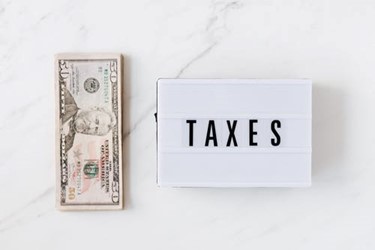Want to keep more of your hard-earned money? Tax planning can help. The current federal income tax brackets range from 10% to 37%, but you can get away with paying less in taxes if you’re smart about claiming deductions and credits. The extra effort can be worth it, here are some ways to lower your tax bill.
Tweak Your W-4
The W-4 is a form you give to your employer, instructing how much tax to withhold from each paycheck. If you received a huge tax bill this year and don’t want another surprise next year, raise your withholding so you owe less when it’s time to file your tax return. If you received a huge refund, you can do the opposite and reduce your withholding. You can change your W-4 at any time.
Contribute to a Retirement Account
Retirement account contributions are a top tax-reduction tool, as they serve two purposes. Contributions to traditional 401(k) and IRA accounts can be deducted from your taxable income and, as a result, reduce the amount of federal tax you owe. These funds also grow tax-free until retirement. If you start early, saving money in these accounts can help secure your retirement.
Navigate your retirement accounts and taxes:
Are you 72 or older?
You didn’t have to take a required minimum distribution (RMD) from your IRAs in 2020 based on the CARES Act, but you will have to in 2021 (and pay tax on it, too).
Are you self-employed or have a business?
Consider saving in a SEP or Simple IRA.
Consider making a catch-up contribution if you are 50 or older
Contribute an additional $6,500 to a 401(k) or 403(b) plan, or $1,000 to an IRA beyond the standard limits.
Do you want to avoid taxes when you make a withdrawal?
Think about a Roth IRA; you can pay taxes now and enjoy qualified tax-free withdrawals later.
Are you ready or able to speed up your retirement savings?
Think about bumping up contributions to your 401(k) or 403(b) plan limits every year.

Contribute to a Health Savings Account (HSA)
If you have a high-deductible health care plan, you may be able to lighten your tax load by contributing to a health savings account, which is a tax-exempt account you can use to pay medical expenses.
- Contributions to HSAs are tax-deductible, and the withdrawals are tax-free, too, so long as you use them for qualified medical expenses.
- For 2020, if you have self-only high-deductible health coverage, you can contribute up to $3,550. For 2021, the individual coverage contribution limit is $3,600.
- If you have family high-deductible coverage, you can contribute up to $7,100 in 2020 and $7,200 in 2021.
- If you’re 55 or older, you can put an extra $1,000 in your HSA.
- Your employer may offer an HSA, but you can also start your own account at a bank or other financial institution.
Open a Flexible Spending Account (FSA)
The IRS lets you funnel tax-free dollars directly from your paycheck into your FSA every year, so if your employer offers a flexible spending account, you might want to take advantage of it to lower your tax bill.
FAQ for your FSA:
What’s the max you can set aside?
$2,750; $5,000 for dependent care in 2021.
Carryover to another year?
Unfortunately, no. You must use it or lose it.
What can you use it for?
Some items may not be reimbursable; check first!
How does this affect your taxes?
Whatever you set aside may reduce your taxable income.
Self Employed?
Self-employed individuals (full time or part time) are eligible for scores of tax deductions. That means your freelance projects or side gig as a ride-share driver could land you considerable tax savings.
A few of the business deductions available include business-related vehicle mileage, shipping, advertising, website fees, percentage of home internet charges used for business, professional publications, dues, memberships, business-related travel, office supplies and any expenses incurred to run your business. If you pay for your own health, dental or long-term care insurance, those premiums may be deductible too. Be sure to keep receipts, mileage logs or other records that you can produce in the event of an audit.
Other ways to save if you are self-employed:
Claim a Home Office Deduction
To qualify for the deduction, the space must be used regularly and exclusively for business purposes. For instance, if an extra bedroom is used exclusively as a home office and it constitutes one-fifth of your apartment’s living space, you can deduct one-fifth of rent and utility fees.
Maximize Your Business Expenses
Usually, business owners and self-employed taxpayers are able to use a much wider range of tax reduction strategies than individual taxpayers because of tax deductible business expenses. Some common business tax deductions include,
- office rent
- home office expenses
- the cost of acquiring and maintaining a vehicle for the business
The lower your net profit, the lower your self-employment tax will be, so writing off as many expenses as possible can help reduce your tax bill. Claiming business tax deductions can also lower both your income taxes and self-employment taxes, and you can deduct a portion of your self-employment tax payments on your personal tax return.
Looking for expert tax help? The Hayes & Associates team have the knowledge and experience necessary to help solve issues you or your business may have. Hayes & Associates provides meticulous tax preparation, compliance, consultation and advice for individuals, businesses, partnerships, corporations, tax exempt organizations and trusts/estates.





